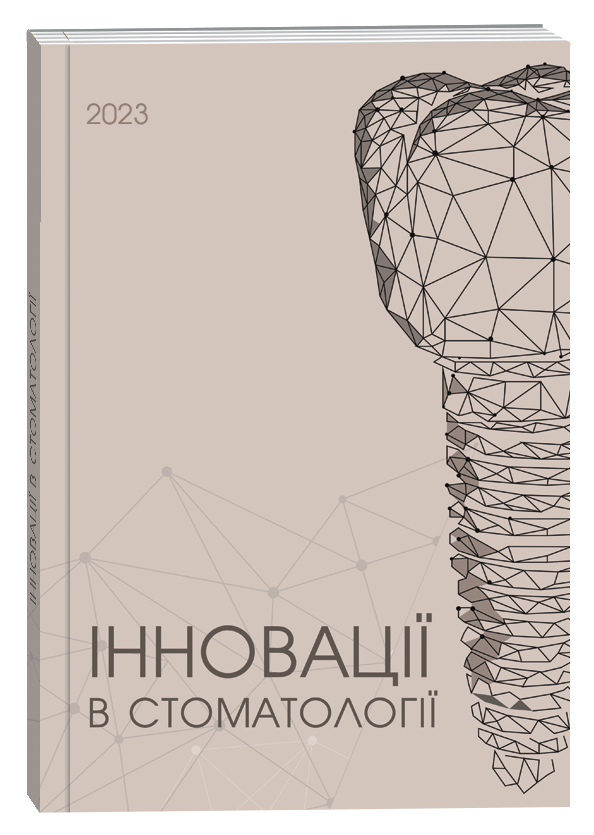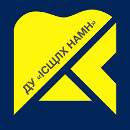THE DURATION OF INTRAORAL SCANNING DIGITAL PROTOCOL USAGE IN CHILDREN’S ORTHODONTICS
DOI:
https://doi.org/10.35220/2523-420X/2024.4.17Keywords:
digital protocol, maxillofacial anomalies and deformations, scanning, timing, 3D model, efficiency of dental care, conventional units of labor intensity, time standards, labor regulation.Abstract
In Ukraine, in children’s orthodontics for providing appropriate assistance for diagnosis and consultation using CT, computer programs, intraoral scanning, production of 3D models, various templates, aligners are quite widely used digital protocols. The main digital diagnostic protocol in children, in addition to orthopantomogram or CT scan, is scanning of the oral cavity with an intraoral scanner followed by the production of a digital 3D jaw models in the form of STL format files. Orthodontic care is provided mainly on a paid basis, and for setting prices, fair calculation of wages and accounting for the work of relevant specialists, objective criteria and indicators for accounting of the specialists work for the provision of dental care are extremely necessary, which could be achieved by applying the official method of determining the labor costs of specialists for dental appointment. According to it, labor standards are defined in conditional labor intensity units (CUL), which are established through time-tracking studies of the duration of appropriate dental care, calculated according to special formulas and officially approved at the level of the Ministry of Health of Ukraine. The purpose of this study is to improve the effectiveness of providing orthodontic care to the pediatric population of Ukraine by determining the duration of digital protocols of the oral cavity intraoral scanning. The object of the study was the duration of orthodontic care, and the subject of the study was methodical techniques for determining the duration of digital protocols of intraoral scanning in children and adolescents and establishing time standards and conventional labor-intensive units for providing this type of medical care. Research methods: – analytical – to determine the structure and nature of labor costs of the orthodontist during intraoral scanning in children and adolescents; – timing – to determine the total duration of the intraoral scanning process in children and adolescents; – mathematical – to determine the value of the departmental standards of the orthodontist’s working time during intraoral scanning in children and adolescents; – statistical ‒ for processing research results. Аccording to the method of determining the duration of work of an orthodontist during intraoral scanning in children and adolescents and establishing standards of time and CUL, since the nature of the work process of a dentist at the clinical stages of providing specialized care is a clear and consistent performance of certain manipulations consisting from a number of repeated and constant elements of the main operation, time costs are previously indexed to permanent time costs (Tp), which do not depend on the number of design elements or actions, and variable-repetitive time costs (Tvr), which depend entirely on these factors. According to the official methodology for determining labor costs in dentistry, where the amount of medical care provided during 60 minutes of working time is used to calculate the CUL (conditional labor intensive units) of a dentist’s work at a clinical appointment, the CUL are calculated according to the formula. Time-lapse studies of the duration of digital protocols of intraoral scanning of the oral cavity in 24 children by 9 orthodontists were conducted in Odesa and Kyiv medical institutions during 2023-2024. It turned out that the duration of the digital protocol execution of this process directly depends on a number of factors: – the child psychological state and behavior in the dental chair, which is regulated by previous psychological preparation on the parents part and directly in the chair on the side of the orthodontist; – anatomical and topographical conditions in the oral cavity; – professional training of an orthodontist, his skills and experience in working with an intraoral scanner and a computer program; – technical parameters and design features of the intraoral scanner; – computer power and Internet speed. The analysis of the results of time-lapse observations of the work of dentists during intraoral scanning of the oral cavity of children and adolescents allowed us to conclude that the average duration of this clinical stage reaches 44.6 minutes, depends on a number of factors and corresponds to the indicator of 0.7 CUL. These indicators will allow you to plan the duration of the clinical process of providing orthodontic care at the children’s reception, calculate the cost of dental services for patients, conduct an objective accounting of the work of specialists, and fairly calculate wages.
References
Дрок В. О. Поширеність зубощелепних аномалій і захворювань пародонта серед підлітків. Український стоматологічний альманах. 2018. № 1. С. 72-73.
Лабунець В.А., Рачинський С.В., Шнайдер С.А., Лабунець О.В., Дієва Т.В., Дієв Є.В. Клінічна характеристика та динаміка розвитку зубощелепних аномалій в осіб молодого віку з дефектами зубних рядів. Вісник стоматології. 2021. № 2(115), Т40. С. 53-58.
Лесіцький М. Ю., Фур М. Б., Машкаринець О. О. Поширеність зубощелепних аномалій серед дітей шкільного віку. Вісник стоматології. 2020. № 2, Т111. С. 61-66.
Мельник В.С., Горзов Л. Ф., Зомбор К. В., Мельник С. В. Взаємозв΄язок зубощелепних аномалій та соматичної патології у дітей старшого шкільного віку. Вісник стоматології. 2021. № 3(116), Т41. С. 28-32.
Мельник В.С., Горзов Л.Ф. Поширеність і структура зубощелепних аномалій у дітей початкових класів м. Ужгорода. Український стоматологічний альманах. 2019. № 2. С. 29-33.
Мельник В.С., Ізай М.Е., Мельник С.В. Поширеність вродженої адентії верхніх бічних різців у підлітків за даними аналізу ортопантомограм. Вісник стоматології. 2022. Т. 120, № 3. С. 109-112.
Суслова О.В., Железняк Н.А., Стеценко Д.В. та ін. Аномалії зубних рядів в структурі зубощелепних аномалій у дітей 7-18 років. Вісник стоматології. 2019. № 1, Т. 31. С. 57-59.
Удод О.А., Драмарецька С.І. Гігієнічний стан порожнини рота у дітей з ортодонтичною патологією. Вісник стоматології. 2022. Т. 120, № 3. С. 117-122. DOI: 10.35220/2078-8916-2022-45-3.20
Фліс П.С., Ращенко Н.В., Філоненко В.В., Мельник А.О. Поширеність зубощелепних аномалій та мовленнєвих порушень серед дітей віком 6-12 років. Сучасна стоматологія. 2018.№ 4. С. 54-57.
Чухрай Н.Л., Савчин С.В. Поширеність зубощелепних аномалій у дітей з мононуклеозом. Вісник стоматології. 2022. № 1(118). С. 67-71. DOI: 10.35220/2078-8916-2022-43-1.12
Kim S.H., Kim K.B., Choo H. New Frontier in Advanced Dentistry: CBCT, Intraoral Scanner, Sensors, and Artificial Intelligence in Dentistry. Sensors (Basel). 2022. № 22(8). Р. 2942. doi: 10.3390/s22082942. PMID: 35458927
Garino F., Manzoli A. Computer technologies in modern orthodontics. Сучасна ортодонтія. 2012. № 3. С. 67-68.
Ardila C.M., Elorza-Durán A., Arrubla- Escobar D. Efficacy of CAD/CAM Technology in Interventions Implemented in Orthodontics: A Scoping Review of Clinical Trials. Biomed Res Int. 2022. № 20. Р. 22:5310555. doi: 10.1155/2022/5310555.
Chiu A., Chen Y.W., Hayashi J., Sadr A. Accuracy of CAD/CAM Digital Impressions with Different Intraoral Scanner Parameters. Sensors (Basel). 2020. № 20(4). Р. 1157. doi: 10.3390/s20041157.
Cave V., Keys W. Digital and conventional impressions have similar working times. Evid Based Dent. 2018. № 19(3). Р. 84-85. doi: 10.1038/sj.ebd.6401327








